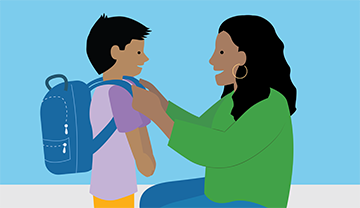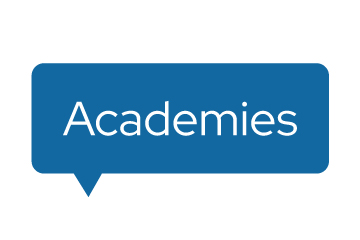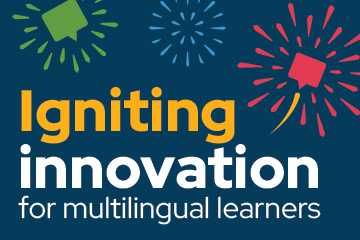Many literacy programs were not designed to effectively use multilingual students’ knowledge, skills, and strengths. This Snapshot is the first in a five-part series that provides insights from relevant research and suggests ways to engage the significant strengths that multilingual learners bring to their literacy development.
How can we build on students’ strong foundations?
Listen to ESL teacher Emily Francis discussing her high school years, when she was viewed as an English learner rather than as a multilingual person.
Multilingual students' literacy grows from their learning at home and in community activities. Their extensive knowledge about the world and about languages provides a strong foundation to build on. The research highlights here show the importance of identifying and building on multilingual students’ existing literacy foundations.
Connecting to background matters.
Every text choice privileges certain students over others, since knowledge about a topic plays a critical role in reading comprehension (Smith et al., 2021). Connecting students’ existing knowledge with classroom texts benefits students’ reading comprehension at all stages – before, during and after reading (Hattan et al., 2023) – and can be accomplished two ways:
- Plan classroom activities that build knowledge related to the text that they will read.
- Choose texts and topics that connect to the background students already have.
To learn about students’ funds of knowledge and literacy practices
- Invite students and/or their family members to visit the classroom to share an oral history of their family.
- Lead a community literacy mapping activity to learn about students’ home and community literacy practices.
Representation matters.

Because of the strong connection between topical knowledge and reading comprehension, readers who rarely get to read texts that reflect their cultural background are at a disadvantage compared to those whose background knowledge is consistently represented in classroom texts. Equally importantly, students need to see connections between the world of school and their lives beyond school, and to see themselves and their lives reflected in meaningful ways. To ensure this, vary the texts and topics used to reflect diversity among students. You can find a variety of texts on websites such as DBRL Kids and the Reading Together Book Project.
Reading is cultural.
Literacy practices differ across cultures. Some stories may only be shared orally. Fiction may follow a different narrative arc, persuasion may be crafted more or less overtly, and logical inferences may be shaped by different values. Using literature from diverse cultures expands students’ understanding of the world and gives them important points of connection.
To make a broad range of perspectives available for discussion
- Read about a topic from a variety of viewpoints and establish respect for diverse perspectives as a classroom norm.
- Make space for students to discuss similarities and differences in literacy practices they engage in with peers, with their families, in school, and in community activities.
More Learning
- Podcast in the “More Than a Test” series: Bridging Languages: Supporting Bilingual Students for Success in Reading and Beyond
- Rudine Sims Bishop on the importance of using diverse books (video)
- Motivating ELL Student Readers, by Kristina Robertson at Colorin Colorado
- WIDA Focus Bulletin: Expanding Reading Instruction with Multilingual Learners (includes a longer bibliography)
References
Duke, N. K., & Cartwright, K. B. (2021). The science of reading progresses: Communicating advances beyond the simple view of reading. Reading Research Quarterly, 56, S25-S44.
Hattan, C., Alexander, P. A., & Lupo, S. M. (2023). Leveraging what students know to make sense of texts: What the research says about prior knowledge activation. Review of Educational Research, 00346543221148478.
Martínez, R. A. (2018). Beyond the English learner label: Recognizing the richness of bi/multilingual students’ linguistic repertoires. The Reading Teacher, 71(5), 515-522.
Recht, D. R., & Leslie, L. (1988). Effect of prior knowledge on good and poor readers' memory of text. Journal of educational psychology, 80(1), 16.
Smith, R., Snow, P., Serry, T., & Hammond, L. (2021). The Role of Background Knowledge in Reading Comprehension: A Critical Review. Reading Psychology, 42(3), 214–240. https://doi-org.ezproxy.library.wisc.edu/10.1080/02702711.2021.1888348
Souto-Manning, M. (2016). Honoring and building on the rich literacy practices of young bilingual and multilingual learners. The Reading Teacher, 70(3), 263-271.
Souto-Manning, M., & Martell, J. (2016). Reading, writing, and talk: Inclusive teaching strategies for diverse learners, K–2. New York, NY: Teachers College Press.





